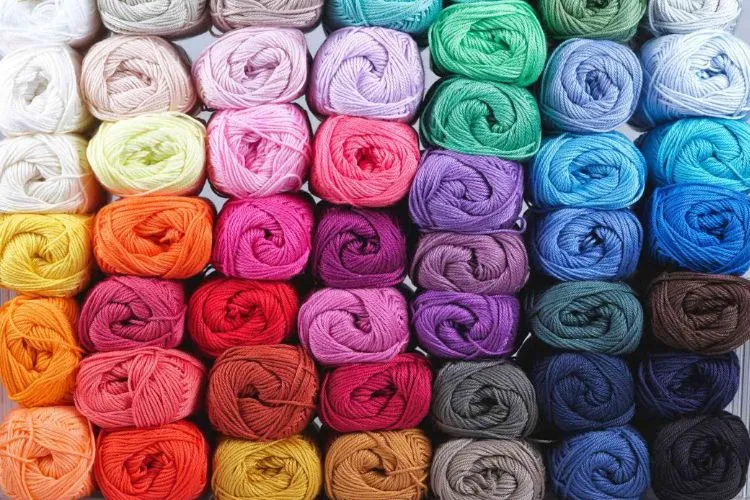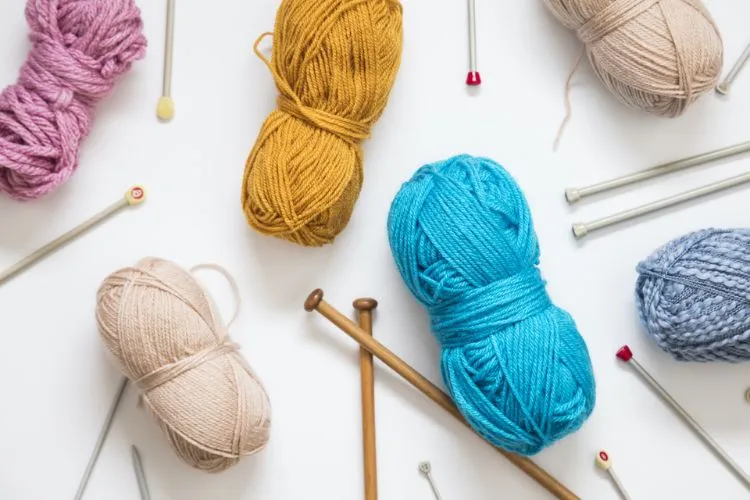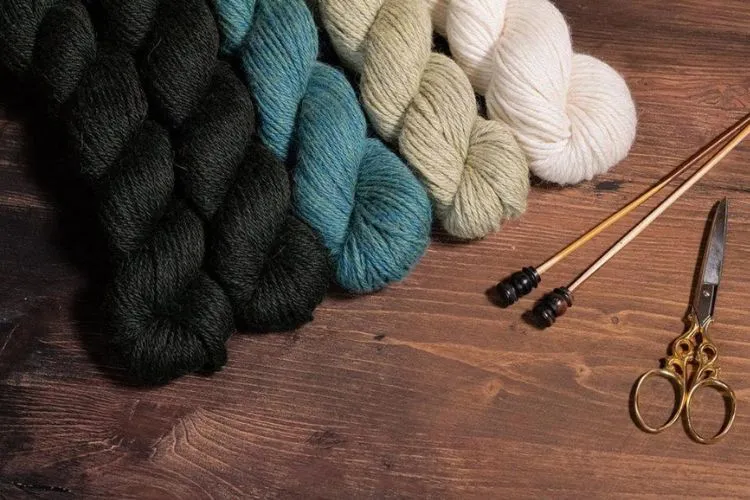The world of yarn crafting is rich and varied, with a plethora of materials to choose from based on the needs of the project and the preferences of the crafter.
Acrylic yarn stands out among these options, known for its versatility and wide availability.
In this article, we delve into what is acrylic yarn, examining its properties, advantages, potential drawbacks, and the many ways it can be used in crafting projects.

What is Acrylic Yarn?
Acrylic yarn is a synthetic fiber created from polymer polyacrylonitrile. It was developed in the mid-20th century as an affordable and readily available alternative to natural fibers like wool and cotton.
The production of acrylic yarn involves spinning the acrylic fiber into strands that can be later wound into balls or skeins.
The invention of acrylic offered a new dimension to the world of textiles. This synthetic yarn often mirrors the look and feel of natural wool, making it a popular choice for those who seek a lower-maintenance and less expensive material.
Characteristics of Acrylic Yarn
Acrylic yarn is known for its durability. It holds up well with time and does not easily wear down. This makes it particularly suitable for items that see a lot of use, such as blankets or everyday wear.
Care is convenient when it comes to acrylic yarn. It can usually be washed and dried in machines, which is a clear advantage for those looking for low-maintenance textile options. Plus, the colors in acrylic yarn tend to stay vivid over time because the fibers hold dyes well.
Because of its synthetic nature, acrylic yarn is a non-allergenic fabric, which makes it a suitable choice for those who are sensitive to allergens that can be present in natural fibers.
Despite these benefits, there are some downsides to consider. Acrylic does not breathe the way natural fibers do, which can make it less comfortable in warm conditions.
It is also prone to static and can pill with friction. From an environmental standpoint, the production and disposal of synthetic fibers like acrylic have raised concerns, as they are not biodegradable.
Types of Acrylic Yarn

There is pure 100% acrylic yarn as well as various blends. By combining acrylic with fibers such as wool or cotton, manufacturers can create yarns that balance the qualities of both materials.
Blends can often improve the feel of the yarn or its suitability for particular types of projects.
Not all acrylic yarns are created equal, and the quality can range significantly. Good quality acrylic yarn is generally softer and less prone to splitting than lower-quality alternatives.
Recognizing high-quality acrylic yarn usually involves looking at the texture and how it feels to the touch, as well as how well it works with knitting needles or crochet hooks.
Uses of Acrylic Yarn
Due to its versatility, acrylic yarn is used in a variety of projects. Home décor items like cushions and throws often use acrylic because it’s durable and easy to clean.
The same goes for fashion accessories such as hats and scarves, which benefit from acrylic’s colorfastness and warmth.
In clothing, acrylic is often used for sweaters and cardigans, offering a lightweight option that mimics wool. It is also a popular choice for baby garments and toys due to its softness and ease of cleaning.
However, it is crucial to weigh the pros and cons of using acrylic for any given project, especially considering durability and care requirements.
Tips for Working with Acrylic Yarn

When crafting with acrylic yarn, there are a few best practices to keep in mind. Work with a tension that’s not too tight to avoid stiffness in the final product.
If the finished item does end up feeling too rigid, there are techniques to soften it, such as using fabric softener during the wash.
It’s also important to consider storage for both the yarn and finished projects. Keeping acrylic yarn away from heat sources is wise because it can be sensitive to high temperatures.
You may also read: Fabric Paint Vs Acrylic Paint: An Easy Guide
Environmental Considerations
The environmental impact associated with acrylic yarn cannot be overlooked. As a petroleum-based product, its production involves the consumption of fossil fuels and the release of other chemicals. When disposed of, acrylic doesn’t break down easily.
However, some manufacturers are initiating recycling programs and trying to produce more sustainable acrylic fibers.
Meanwhile, crafters who are concerned about the environment have the option to explore these initiatives or consider alternative materials more friendly to the earth.
Frequently Asked Questions (FAQs)
Is acrylic yarn safe for baby clothes?
Yes, due to its hypoallergenic nature and ease of care, acrylic can be suitable for baby clothes. However, it’s important to consider the warmth and breathability of the garment since acrylic does not breathe as well as natural fibers.
How do I prevent my acrylic yarn project from becoming too stiff?
To avoid stiffness, maintain an even tension that’s not too tight while working with acrylic yarn. Washing the finished project with fabric softener can also help soften the material.
Can acrylic yarn be used for every knitting or crocheting project?
While acrylic yarn is versatile, it may not be the best choice for every project. Consider the desired outcome for your project regarding breathability, stiffness, and warmth before selecting acrylic yarn.
How does acrylic yarn react to washing and drying?
Acrylic yarn holds up well to machine washing and drying. Turn garments inside out to reduce pilling and use a gentle cycle to preserve the life of your project.
Are there eco-friendly alternatives to traditional acrylic yarn?
Yes, there are more sustainable options available, including recycled acrylic yarn and natural fiber yarns that are produced responsibly.
Conclusion:
Acrylic yarn certainly has a place in the crafting world, with its multitude of applications and benefits. It presents a practical and cost-effective option for many projects.
However, like any material, it has limitations and impacts that must be considered. With careful selection and use, acrylic yarn can be incorporated into your crafting repertoire responsibly and effectively.

Meet Isabella Anderson, your acrylic painting mentor with over a decade of brush-wielding mastery. Dive into the colorful world of acrylics with her expert guidance, featured exclusively on ‘Acrylic Authority.’ Unleash your inner artist and explore the limitless possibilities of this versatile medium alongside a true acrylic aficionado.
